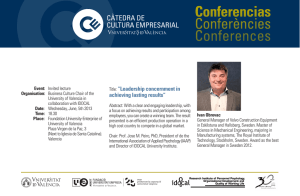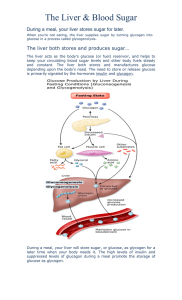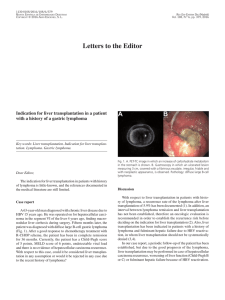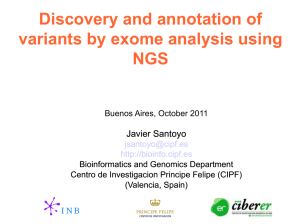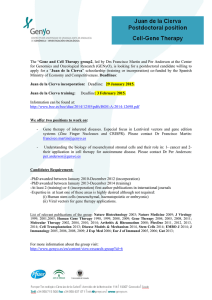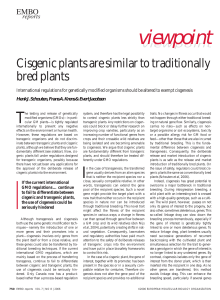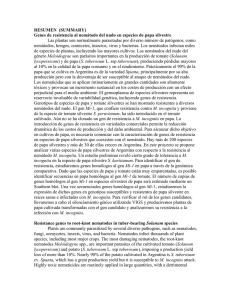Seminario CIPF
Anuncio
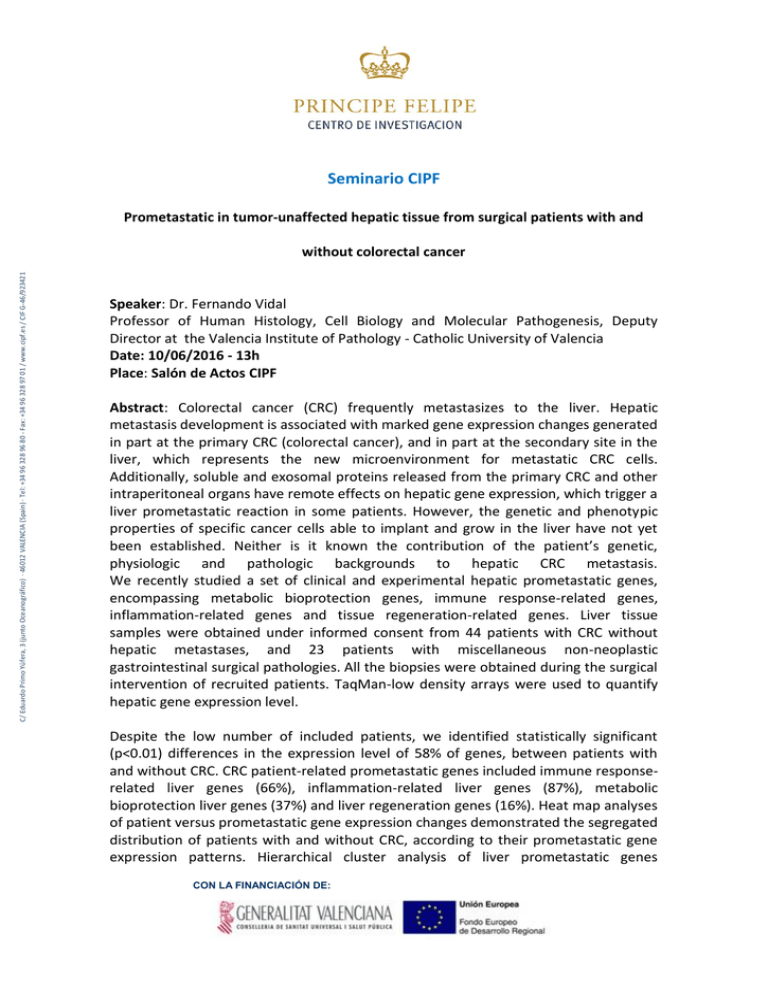
Seminario CIPF Prometastatic in tumor-unaffected hepatic tissue from surgical patients with and C/ Eduardo Primo Yúfera, 3 (junto Oceanográfico) · 46012 VALENCIA (Spain) · Tel: +34 96 328 96 80 - Fax: +34 96 328 97 01 / www.cipf.es / CIF G-46/923421 without colorectal cancer Speaker: Dr. Fernando Vidal Professor of Human Histology, Cell Biology and Molecular Pathogenesis, Deputy Director at the Valencia Institute of Pathology - Catholic University of Valencia Date: 10/06/2016 - 13h Place: Salón de Actos CIPF Abstract: Colorectal cancer (CRC) frequently metastasizes to the liver. Hepatic metastasis development is associated with marked gene expression changes generated in part at the primary CRC (colorectal cancer), and in part at the secondary site in the liver, which represents the new microenvironment for metastatic CRC cells. Additionally, soluble and exosomal proteins released from the primary CRC and other intraperitoneal organs have remote effects on hepatic gene expression, which trigger a liver prometastatic reaction in some patients. However, the genetic and phenotypic properties of specific cancer cells able to implant and grow in the liver have not yet been established. Neither is it known the contribution of the patient’s genetic, physiologic and pathologic backgrounds to hepatic CRC metastasis. We recently studied a set of clinical and experimental hepatic prometastatic genes, encompassing metabolic bioprotection genes, immune response-related genes, inflammation-related genes and tissue regeneration-related genes. Liver tissue samples were obtained under informed consent from 44 patients with CRC without hepatic metastases, and 23 patients with miscellaneous non-neoplastic gastrointestinal surgical pathologies. All the biopsies were obtained during the surgical intervention of recruited patients. TaqMan-low density arrays were used to quantify hepatic gene expression level. Despite the low number of included patients, we identified statistically significant (p<0.01) differences in the expression level of 58% of genes, between patients with and without CRC. CRC patient-related prometastatic genes included immune responserelated liver genes (66%), inflammation-related liver genes (87%), metabolic bioprotection liver genes (37%) and liver regeneration genes (16%). Heat map analyses of patient versus prometastatic gene expression changes demonstrated the segregated distribution of patients with and without CRC, according to their prometastatic gene expression patterns. Hierarchical cluster analysis of liver prometastatic genes CON LA FINANCIACIÓN DE: C/ Eduardo Primo Yúfera, 3 (junto Oceanográfico) · 46012 VALENCIA (Spain) · Tel: +34 96 328 96 80 - Fax: +34 96 328 97 01 / www.cipf.es / CIF G-46/923421 according to their expression level correlation showed two well-differentiated gene signature having different functional associations in the liver of patients with and without CRC. These data demonstrated remarkable changes in the expression level of liver prometastatic genes between patients with and without CRC, and suggest the potential interest of identified gene signatures for the individual assessment of hepatic metastasis risk in CRC patients, and as an in vitro screening method to identify molecular inhibitors of liver prometastatic genes. CON LA FINANCIACIÓN DE:


